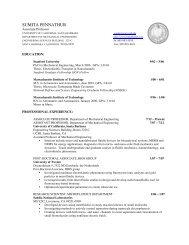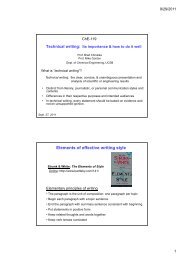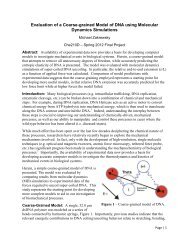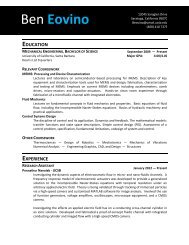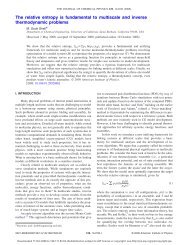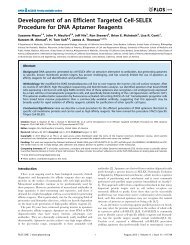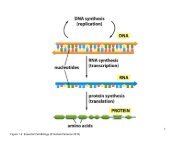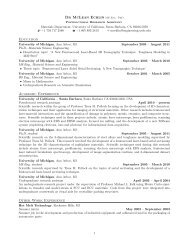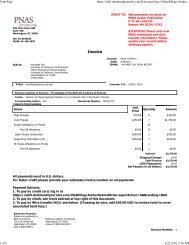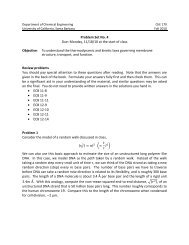Extensive thermodynamic potentials
Extensive thermodynamic potentials
Extensive thermodynamic potentials
Create successful ePaper yourself
Turn your PDF publications into a flip-book with our unique Google optimized e-Paper software.
ChE 210A<br />
Thermodynamics and statistical mechanics<br />
derived. The negative sign comes from the fact that is in the top-left quadrant (think of it as negative<br />
x and positive y). Maxwell relations about also have a negative sign, but those for and do<br />
not.<br />
To remember the order of the magic square, start at the top left hand corner and use the mnemonic<br />
“Great people have studied under very able teachers.” (No egoism intended.)<br />
Potential transformation<br />
As an example, let’s prove ⁄ <br />
. To do this, start with the fact that<br />
Now, express as the derivative of :<br />
Divide both sides by :<br />
<br />
<br />
<br />
<br />
1 <br />
Now, the RHS can be expressed as a derivative using the chain rule, giving finally:<br />
Nonnatural derivative<br />
<br />
⁄ <br />
<br />
What if we know , , but want to find <br />
Here, is not one of the natural variables that can<br />
<br />
be held constant. We start by writing the full differential :<br />
<br />
<br />
<br />
<br />
<br />
Then, we divide through by the desired derivative, taken at constant :<br />
Substituting in some definitions gives,




